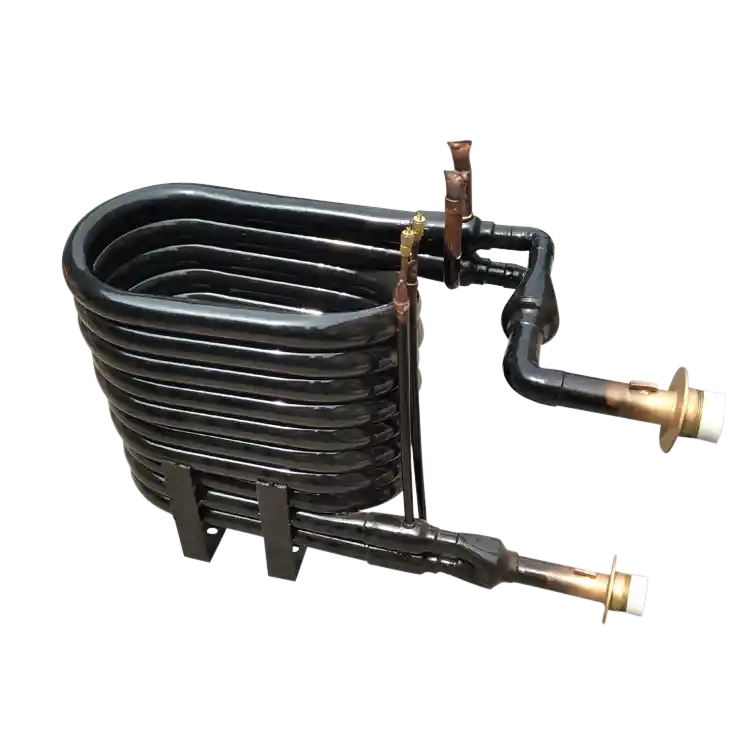Introduction
The assembly and connection of coaxial heat exchangers require careful attention to ensure a proper fit and alignment. This article focuses on the significance of ensuring proper fit and alignment in coaxial heat exchangers and its impact on performance and efficiency. We will explore the key considerations and techniques involved in achieving a perfect fit and alignment, emphasizing the importance of precision, quality control, and adherence to industry standards.
1. Importance of Proper Fit and Alignment
Proper fit and alignment are crucial for the optimal functionality and performance of coaxial heat exchangers. This section highlights the significance of achieving a perfect fit and alignment.
1.1 Enhanced Heat Transfer Efficiency
A proper fit and alignment between the components of a coaxial heat exchanger facilitate efficient heat transfer. When the inner and outer tubes, along with other components, are accurately fitted and aligned, it allows for maximum contact and optimal heat exchange between the fluid streams, resulting in improved heat transfer efficiency.
1.2 Prevention of Leakage and Energy Loss
Ensuring a proper fit and alignment helps prevent leakage and energy loss in coaxial heat exchangers. Tight seals and precise alignment minimize the risk of fluid leakage between the tubes, which can lead to energy inefficiencies, reduced performance, and increased maintenance requirements. A proper fit and alignment ensure the integrity and reliability of the heat exchanger system.
1.3 Long-Term Durability and Performance
A coaxial heat exchanger with a proper fit and alignment exhibits enhanced durability and long-term performance. Proper alignment reduces stress and strain on the components, minimizing the risk of mechanical failure, deformation, or damage. It contributes to the overall reliability and longevity of the heat exchanger.
2. Considerations for Achieving Proper Fit and Alignment
Achieving a perfect fit and alignment in coaxial heat exchangers requires careful consideration of various factors. This section discusses key considerations that manufacturers should keep in mind.
2.1 Precision Manufacturing and Quality Control
Precision manufacturing processes and rigorous quality control measures are essential for achieving a proper fit and alignment. Strict adherence to dimensional specifications, surface finishes, and tolerances during the fabrication and assembly stages ensures that the components fit together seamlessly and align accurately. Regular inspections, measurements, and testing at different stages of the production process are necessary to maintain high quality standards.
2.2 Compatibility of Components
The compatibility of components, including the inner and outer tubes, headers, and connectors, is crucial for achieving proper fit and alignment. Ensuring that the components are designed and manufactured to precise specifications, such as matching inner and outer diameters, wall thicknesses, and connection points, is essential for seamless integration. Careful consideration should be given to material compatibility and thermal expansion characteristics to avoid mismatches or potential issues during operation.
2.3 Alignment Techniques and Tools
Various alignment techniques and tools are available to achieve proper fit and alignment in coaxial heat exchangers. Laser alignment systems, precision measurement instruments, and specialized alignment jigs or fixtures can aid in accurately aligning the components. These techniques and tools help verify concentricity, parallelism, and angular alignment to achieve optimal fit and alignment.
3. Quality Assurance and Testing
Quality assurance and testing processes are integral to ensuring proper fit and alignment in coaxial heat exchangers. This section discusses key aspects of quality assurance and testing.
3.1 Inspection and Verification
Thorough inspection and verification of the components at each stage of the assembly process are essential to identify any deviations from the desired fit and alignment. Visual inspections, measurement checks, and functional tests can help identify and rectify any issues promptly, ensuring that the final product meets the required specifications.
3.2 Leak Testing
Leak testing is a critical aspect of quality assurance in coaxial heat exchangers. Various methods, such as pressure testing or dye penetrant testing, can be employed to detect any potential leaks or weaknesses in the connections and seals. Leak testing helps ensure the integrity and performance of the heat exchanger by identifying and addressing any leakage points.
3.3 Performance Evaluation
Performance evaluation of the assembled coaxial heat exchanger is essential to validate the achieved fit and alignment. Conducting performance tests under simulated or actual operating conditions helps assess heat transfer efficiency, pressure drop, and overall system performance. Any deviations or inefficiencies can be identified and corrected to optimize the performance of the heat exchanger.
Conclusion
Achieving a proper fit and alignment in coaxial heat exchangers is paramount for their optimal performance, efficiency, and durability. By considering precision manufacturing, compatibility of components, alignment techniques, and thorough quality assurance processes, manufacturers can ensure that the heat exchangers meet the required specifications and deliver reliable heat transfer capabilities. The meticulous attention to fit and alignment, along with comprehensive testing, contributes to the successful integration and long-term performance of coaxial heat exchangers in various industrial applications.


